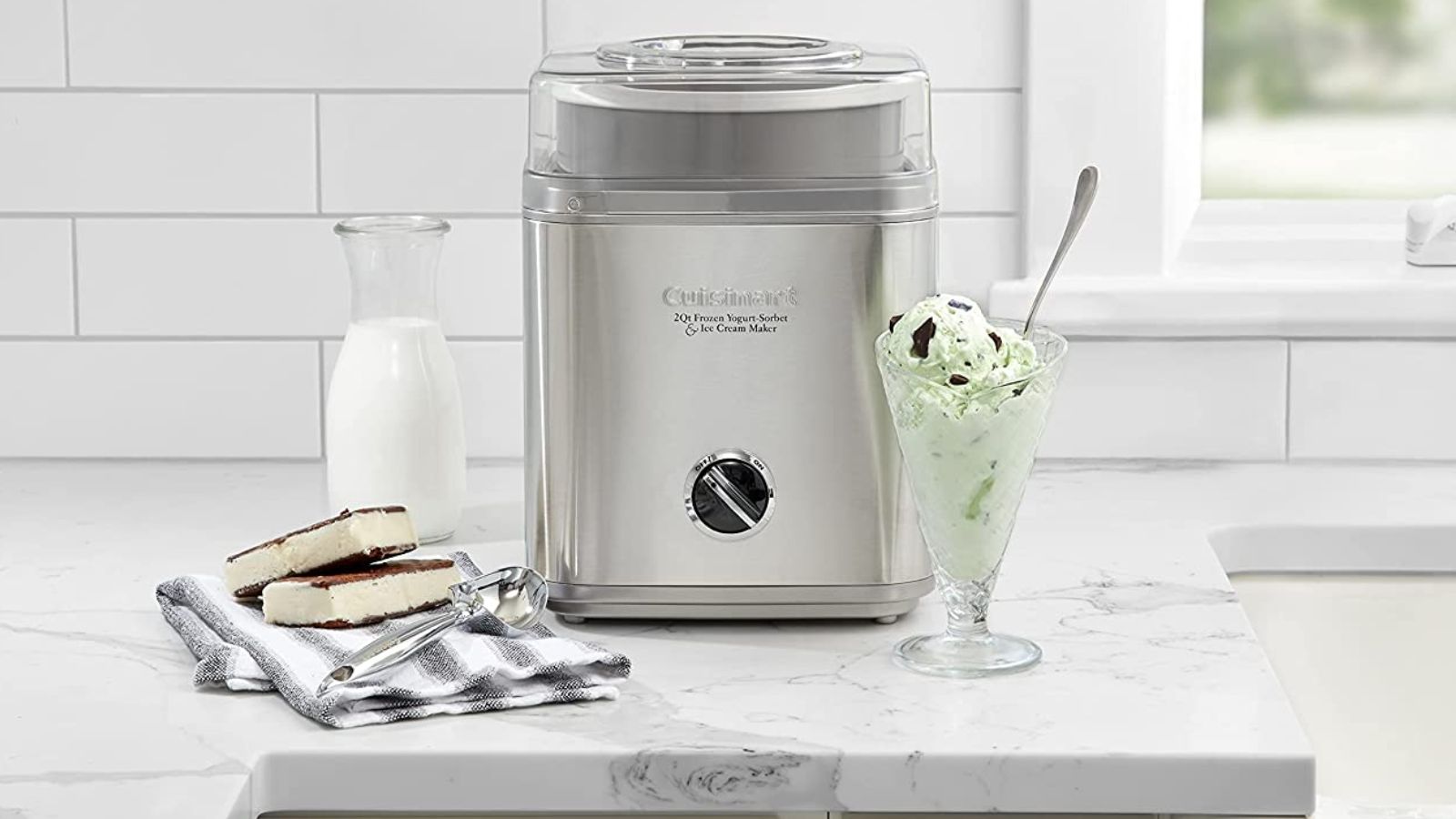
Cuisinart are market-leaders when it comes to ice cream machines. After using their ice cream maker, I understand why. It’s compact, relatively quiet, and easy to clean. Most importantly, it makes exceptional ice cream.
The Pure Indulgence model sits amongst Cuisinart’s elaborate range of ice cream makers. You can get more frills and flourish, but for under $100, this is good value and a great option for domestic use. I tested this on ice cream, non-dairy products, frozen yogurt, and sorbet, so that I could see how well the Cuisinart performed in everyday ice cream tasks.
It’s reassuring to see that Cuisinart are capable and experienced in the ice cream maker market; they’re a safe bet. Sometimes, big brands don’t innovate or make the best affordable options, but this is the stuff ice cream dreams are made of.
Product Specifications
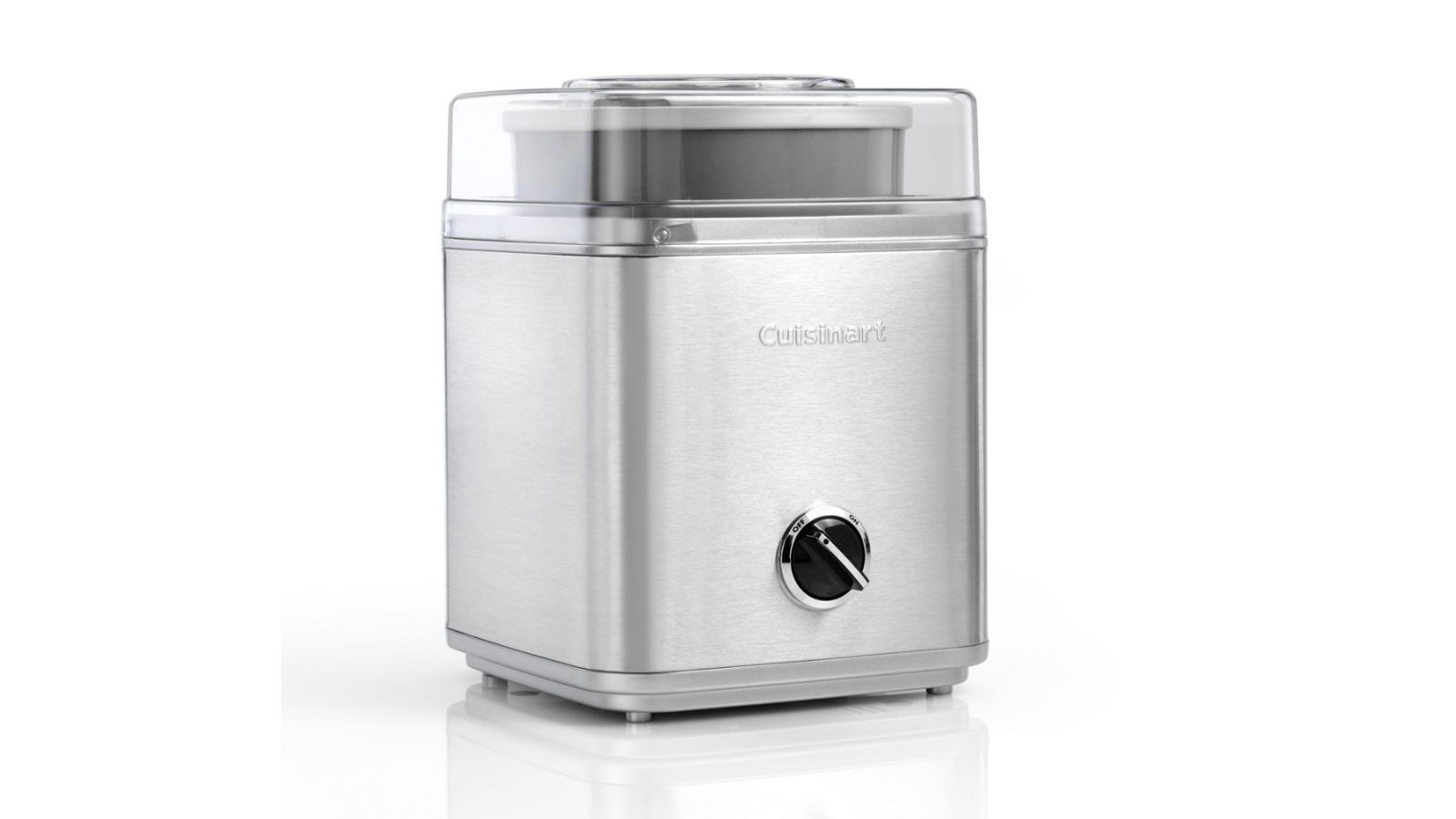
Unboxing
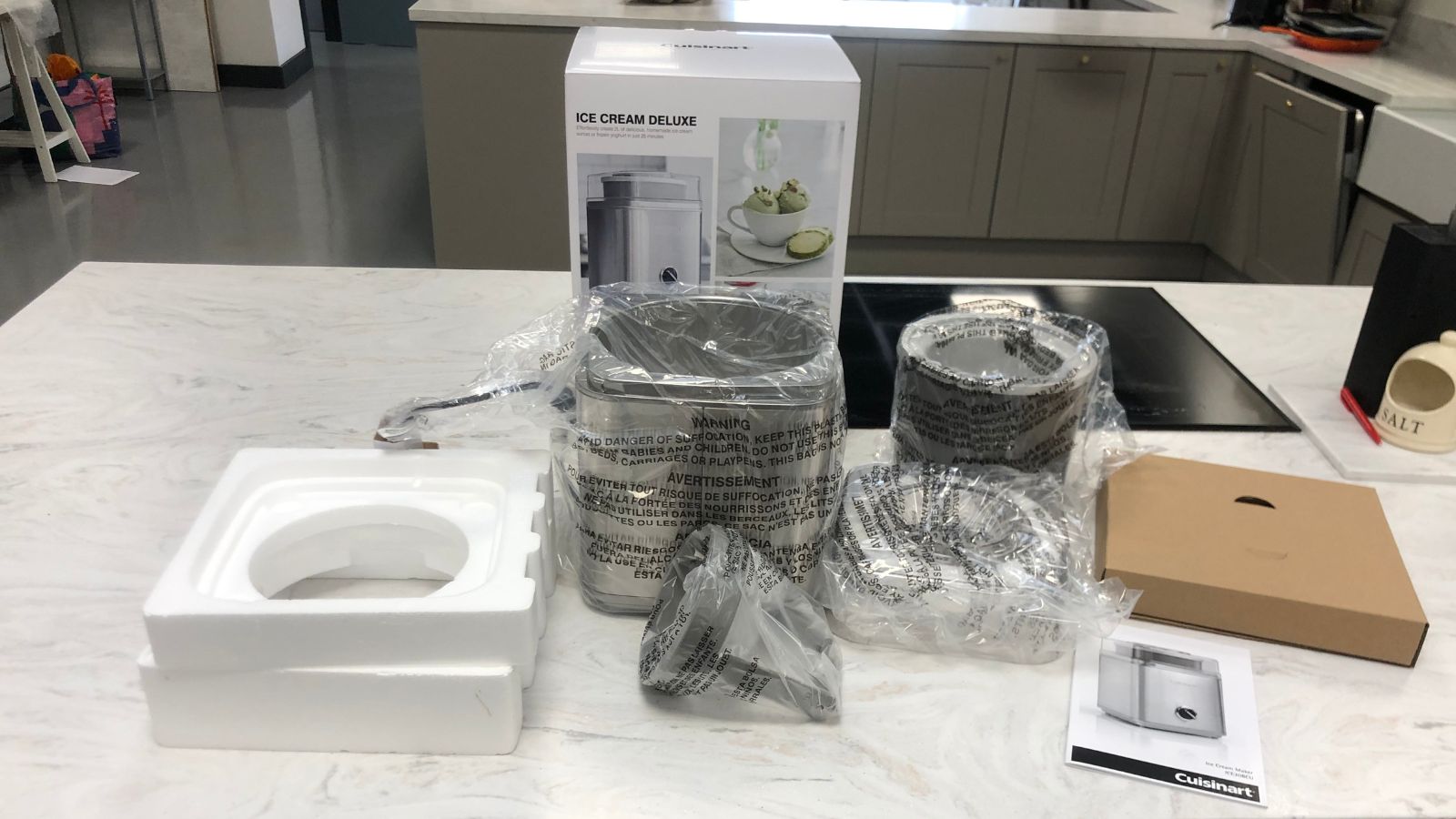
I set my expectations high for Cuisinart. Their square, sleek, stainless steel machine did not disappoint. This appliance has a small footprint, which is reflected in the packaging. It was mostly recyclable, with a few plastic bags. Hold on to these for later. When it was out on the countertop, I liked the look of it. I'd happily leave it on my countertop, but could equally stow it away in a cupboard. Whilst it isn’t featherweight, it’s certainly not as heavy as some of the other appliances that I tested.
As with most ice cream makers, this requires some planning in advance. The bowl needs to be stored at the back of the freezer for 12 hours. Cuisinart suggests that you place your freezer bowl in a plastic bag to prevent freezer burn. Although I cursed the plastic bags when I unboxed the ice cream maker, I was grateful to re-use them in my ice cream prep.
Who would it suit?
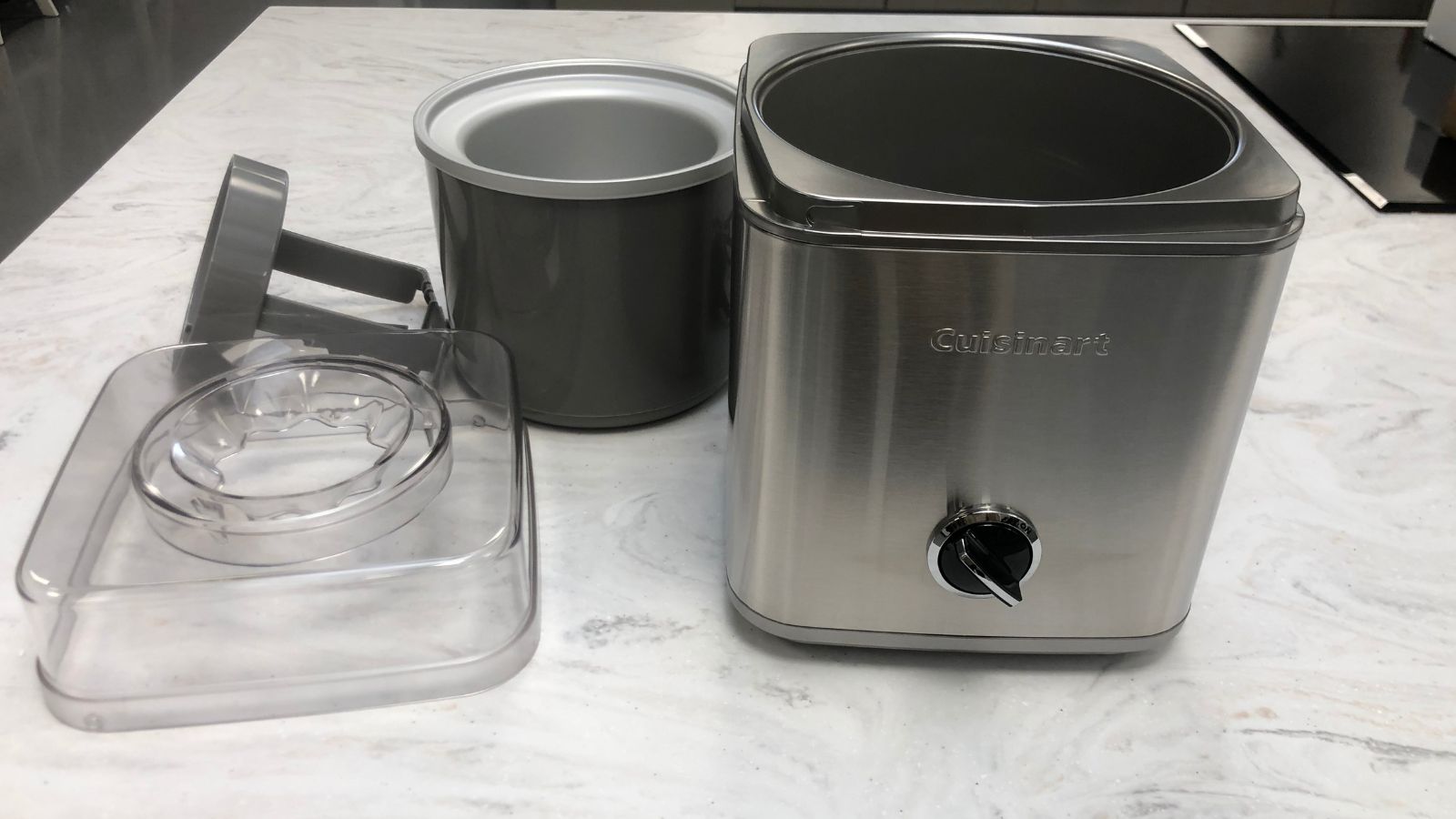
If you want a capable ice cream maker that doesn’t need much hand-holding, this is the ideal appliance for you. It’s easy to use, looks good on the countertop and doesn’t take up much room. You can make two quarts of frozen dessert in under twenty five minutes, so it’s well-suited for large capacity production.
That being said, the bowl requires quite some freezer space, so if your drawers or shelves are slim and shallow, you might want to get it cleared now. Also, not everybody wants to make huge batches of ice cream. This is a big appliance if you’re looking for single serve, for example. The dial also means that you don’t get much input or variability in your ice cream making and you’ll need to keep an eye on time yourself, because it’s not automatic. If you’re fussy and fancy with ice cream, this might not be the one for you.
What is it like to use?
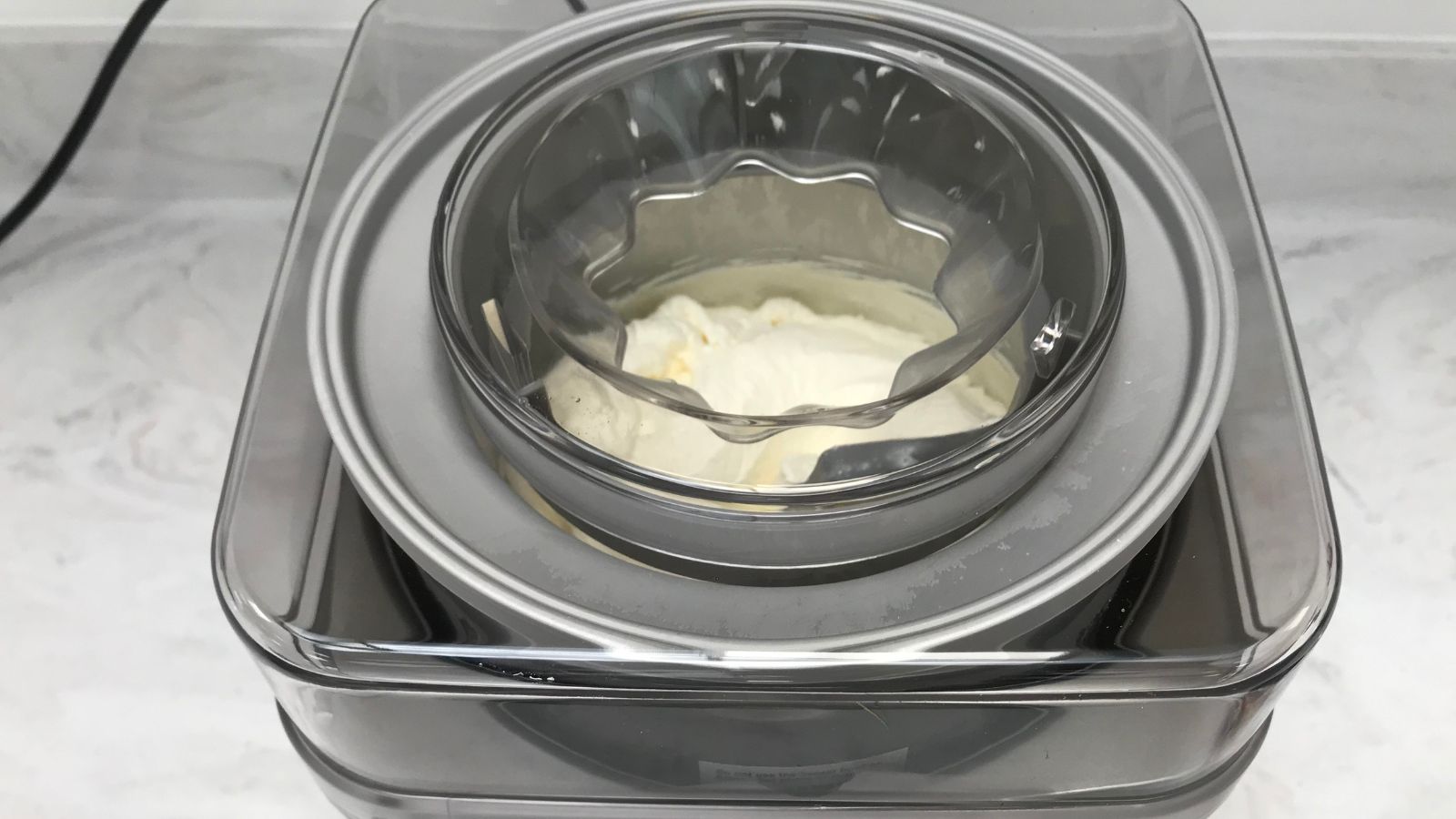
One of the most common ice cream making methods requires a paddle, attached to a motor which churns the ice cream. If the motor is weak, or the dasher is caught, this can bring your ice cream making to a stop. Cuisinart have switched the motorized parts, so the paddle stays still and the bowl rotates. This makes the mixture more likely to keep moving if the ice cream is thick or your motor is flagging. You can watch this happen through the clear lid – it’s mesmerizing.
After my overnight freezing prep, all I had to do was sit the frozen bowl into the unit and place the dasher, loosely, inside the bowl. Cuisinart warned that the freezer bowl will sit a little above the machine and that the paddle will feel loose. This is how it is supposed to be. The lid slots on top and the machine is ready to go. It really couldn’t be any easier. The clear lid has a wide hole on top, making pouring straight into the moving churner easy. There is no splashing or sticky messes involved.
Vanilla Ice Cream
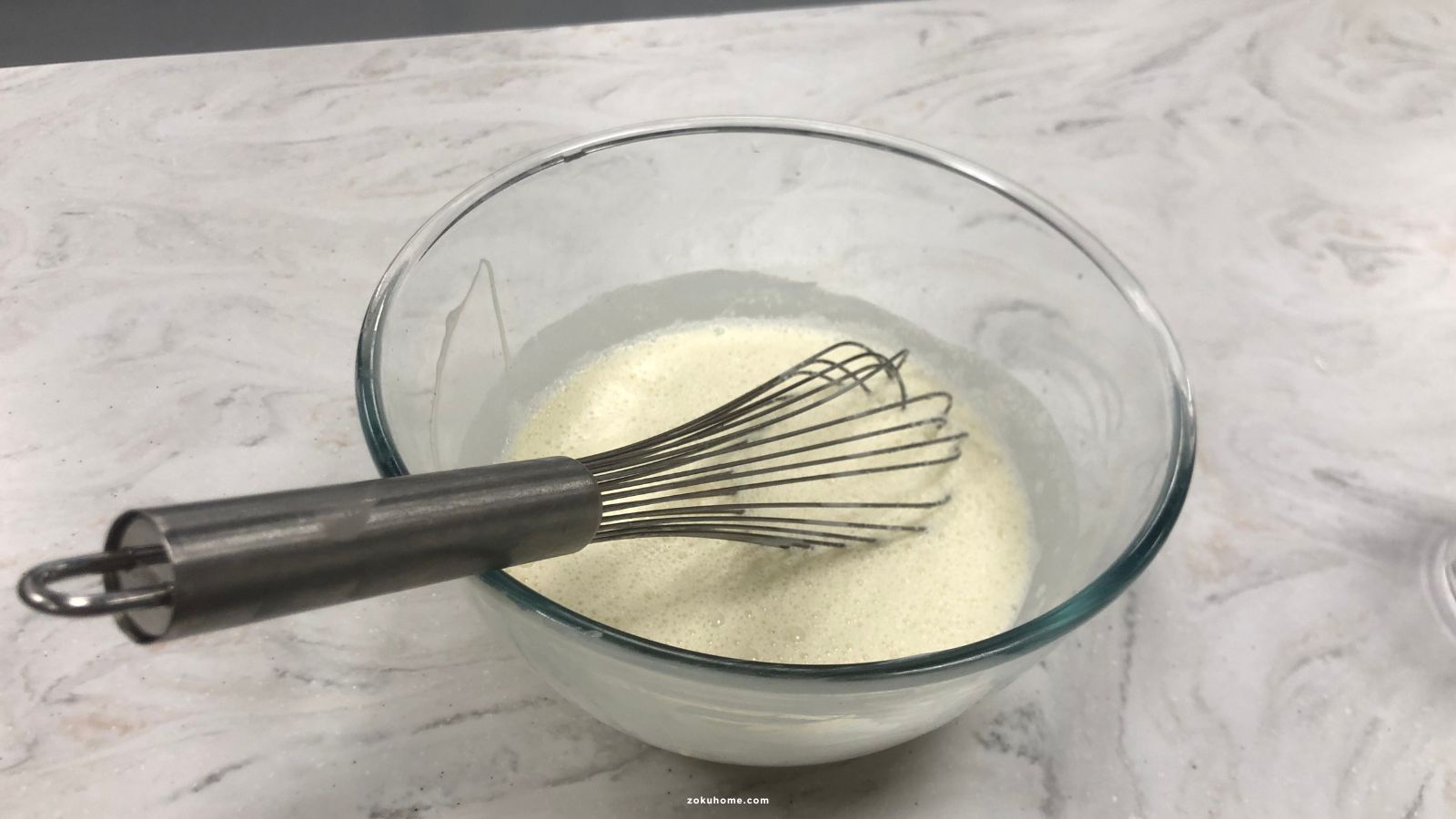
I used a standard ice cream recipe, rather than one of Cuisinart’s many suggested ones. I wanted to perform a fair test across all of the ice cream makers that I tested. I whisked one cup of whole milk with ¾ cup of granulated sugar. Once dissolved, I added two cups of heavy cream and two teaspoons of vanilla paste. This mix needs to be around 40 degrees Fahrenheit, refrigerator temperature, before adding it to the bowl.
When I was ready, I twisted the dial to get my ice cream maker churning. If I didn’t do this, I risked the ice cream freezing instantly and jamming the machine. As the dasher was churning, I slowly poured the ice cream mix into the bowl. It was a very tidy, controlled experience. I watched the liquid bubble for a bit, but Cuisinart suggests that this will take at least 20 minutes.
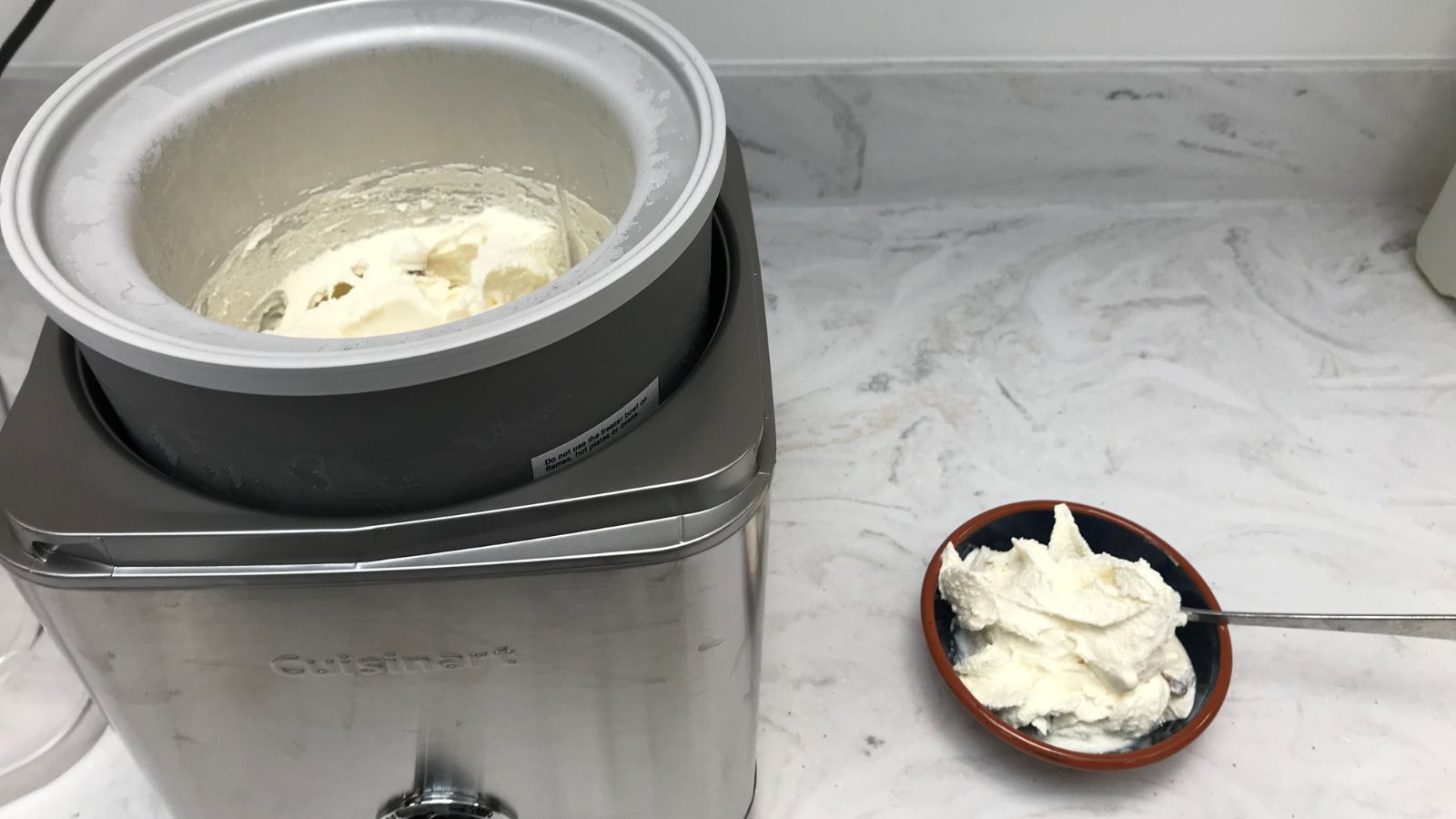
A little impatiently, I checked at 16 minutes and could see that the ice cream needed more. The mix looked soft, but not servable. At 26 minutes, I think it needed a little more. After another five it was firm and perfect. The lid needed a little twist to get off, but that was it. In thirty minutes, I had churned my ice cream.
Cuisinart suggests that 15 minutes before the end, you should add any extras you want in. I added in some brownie pieces and churned for a couple of minutes. They were distributed, but gathered at the bottom a little. After five, the spread was pretty even. Scraping the ice cream out, this soft serve was firm, cold, and crisp. As an ice cream, it was faultless.
Vegan Ice Cream
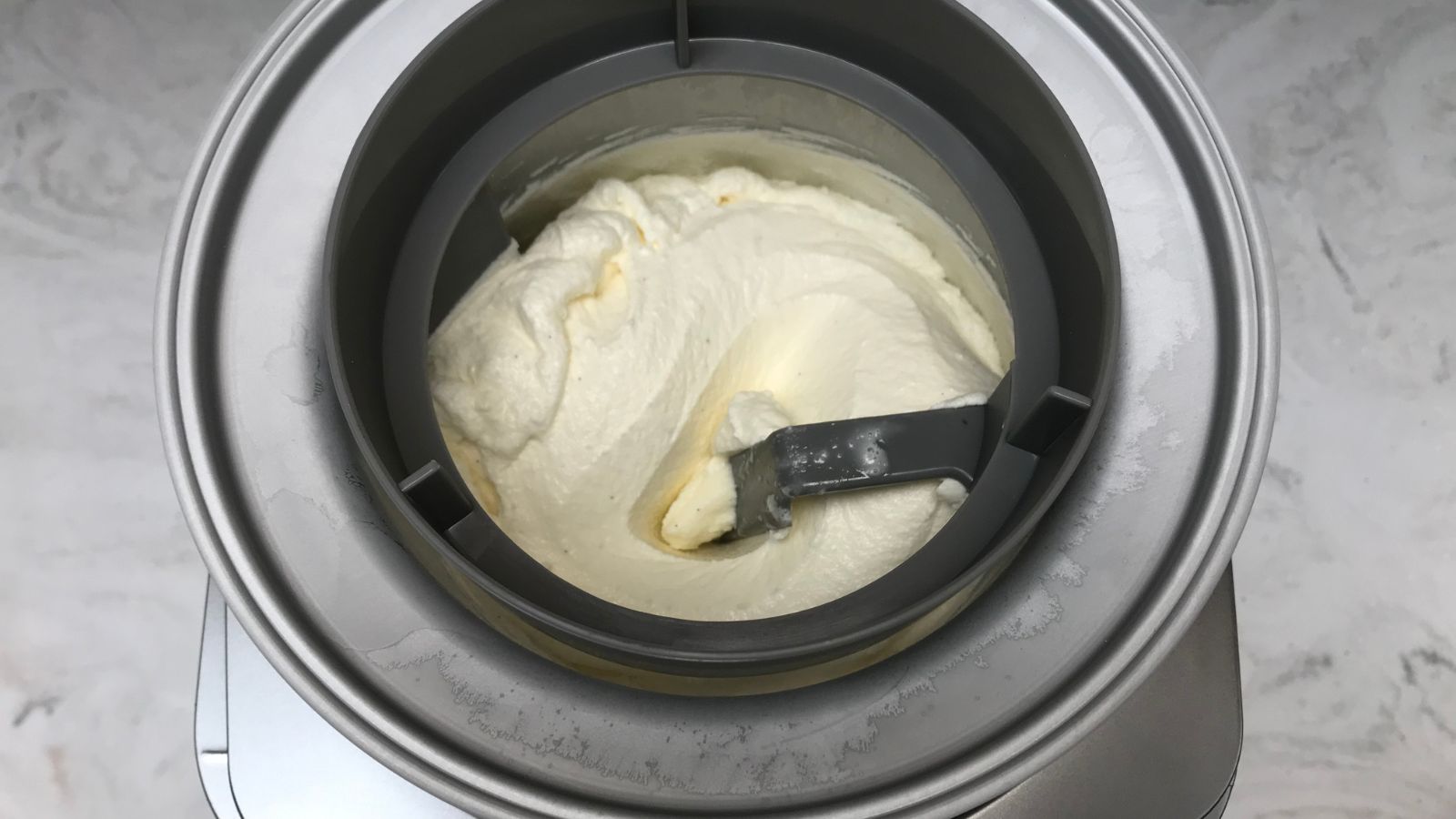
Notoriously tricky, I substituted vegan alternatives into my dairy ice cream recipe. These can split, crystallize, and behave in more difficult ways than dairy products. Following the same process as with vanilla ice cream, I watched the Cuisinart churn. I didn’t check it for 25 minutes. At which point, the ice cream was nearly done. At 35 minutes, this was more than ready to eat. Again, it was firm, cold, and super smooth. The vegan ice cream was some of the best I have tasted. The texture was light, but the ice cream was substantial enough to hold its shape. It was creamy, an even texture, and delicious.
Sorbet
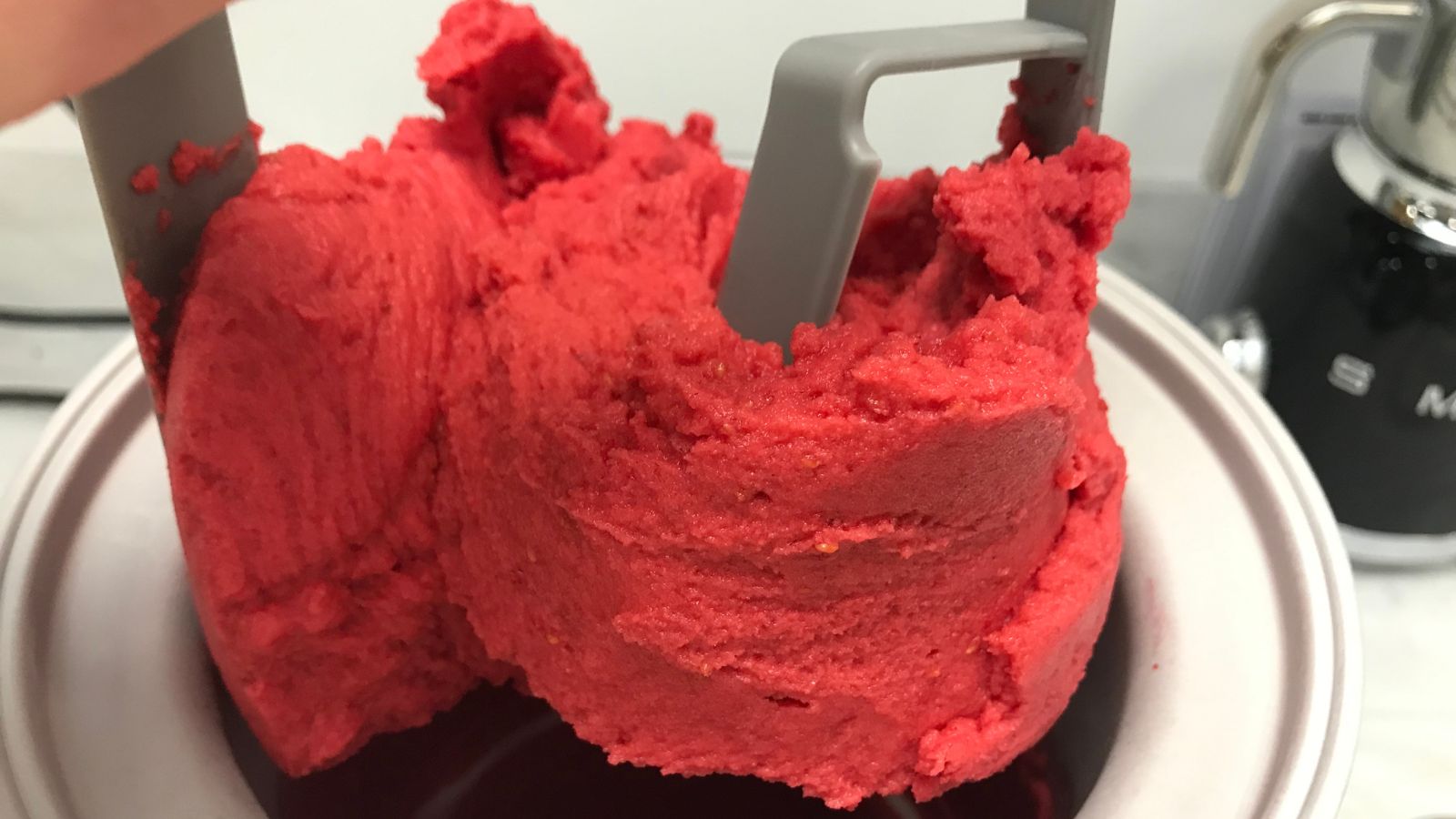
After running through the tests, the Cusuinart had been in a hot kitchen for nearly 2 and a half hours, being cleaned with warm water. Even though the bowl is double insulated, it wasn’t ready for sorbet. I tried it, but the sorbet only turned slushy. Giving this the benefit of the doubt, I re-froze the bowl to come back and test the next day.
I had pre-blended 450g of raspberries and mixed them with 200g of sugar syrup. I turned the dial, the dasher rotated and I poured in my refrigerator-temperature mixture. A few splats of raspberry sorbet flew out, but the plastic shield protected my clothes from these. After seven minutes, I could see the mix was getting slushy. At fifteen minutes, it was closer to sorbet, but needed more time. By twenty minutes, the sorbet was more than done. I lifted the drive, with sorbet clinging to it and scraped off my mix. The sorbet was smooth, fluffy, and refreshing. It could have been creamier, but I think sieving out the raspberry seeds would have helped that. When I froze and returned to the sorbet a few hours later, it had hardened significantly. It was still scoopable, but not as smooth as the results from the KitchenAid.
Frozen yogurt
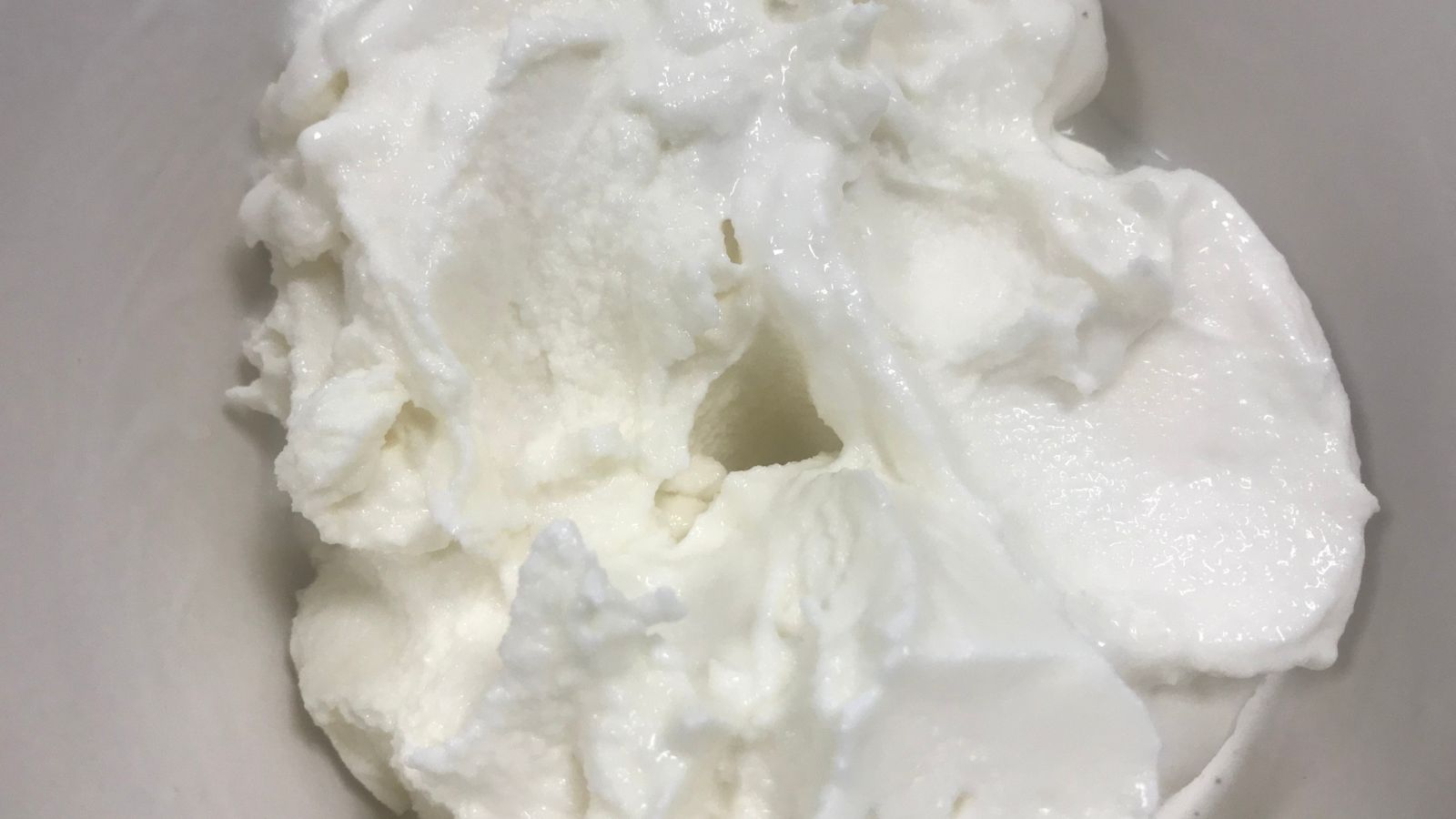
Making frozen yogurt was really easy. All I had to do was pour yogurt from the pot into the frozen bowl. After twenty minutes, the yogurt was thick and had a good soft serve texture. I noticed that some of the yogurt stuck to the sides, so I chipped that away. It came off easily, but doesn’t give the smoothest texture. If I had this in isolation, I would have loved it. Compared to the KitchenAid, the yogurt was still a little grainy and not as light. I’m being pernickety, but these are important details if you’re stuck between the two.
Vegan Frozen Yogurt
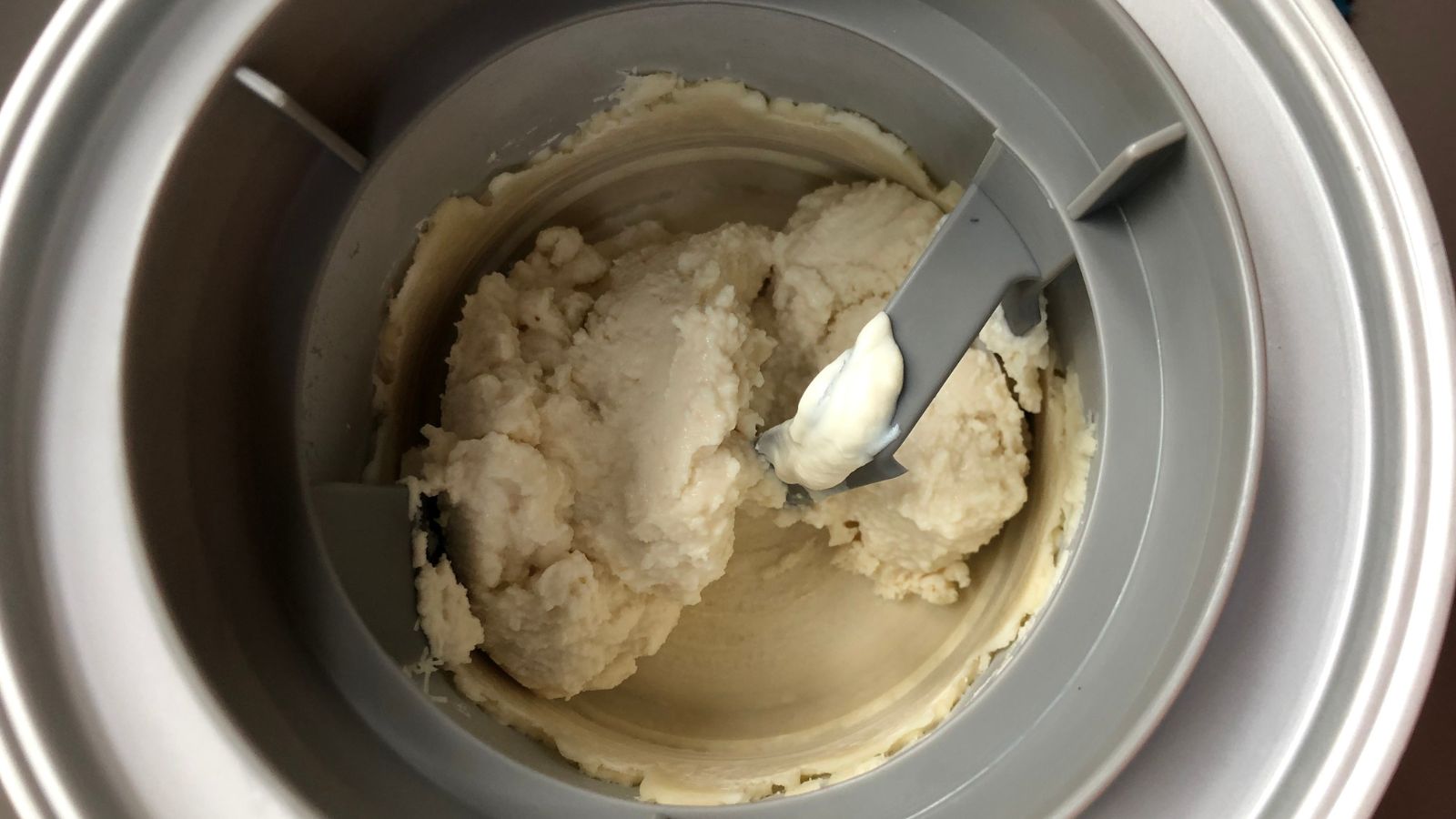
We don't normally test vegan yogurt in our ice cream maker, but I was eager to test out some soya yogurt. I poured in an entire, unsweetened tub. Within 15 minutes it was thick and creamy. I thought the mixture looked crumbly, but it wasn't at all. I scooped it into a bowl and really enjoyed it. What I did notice however, was that I had a thick layer of frozen yogurt around the edge of my ice cream freezer bowl. I had the exact same problem with the Zoku when I used vegan yogurt. I think this might be because of the high water content. I didn't lose a huge amount, but make sure to add vegan yogurt in slowly if you choose to make it. Try to keep the mix in the center of your mixing bowl and you shouldn't encounter a problem.
Cleaning and Storage
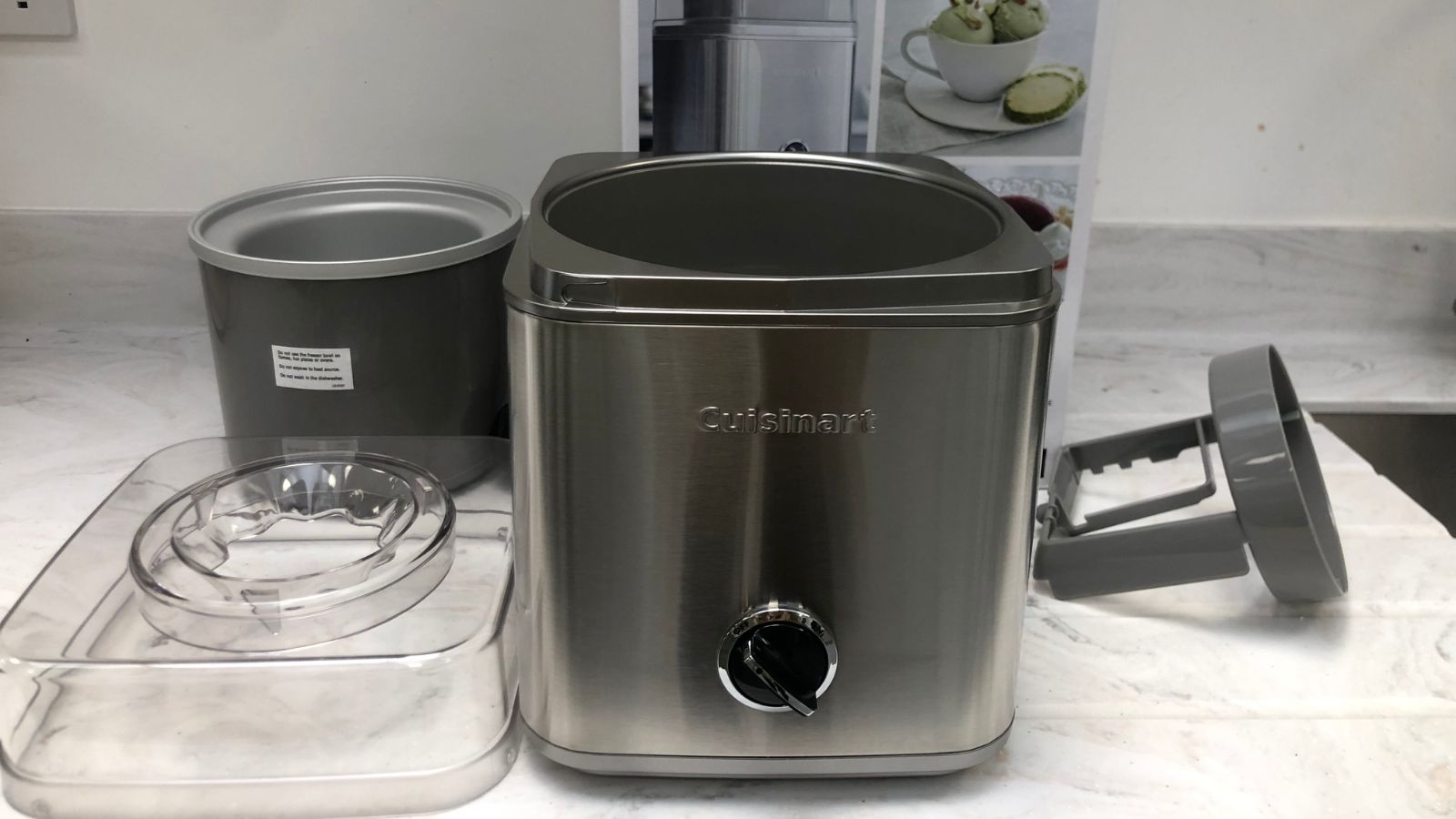
None of the parts of the Cuisinart are dishwasher safe, so you’ll need to wash them by hand. The lid was hardly dirty, so I gave it a precautionary wash in warm soapy water. Using a soft sponge, I did the same for the paddle and freezer bowl. It was very quick and easy. However, the base station showed my fingerprints a little more than I would have liked. I used a damp microfiber cloth and it was back to its former glory, but be wary, this will need more upkeep than other models.
When using other ice cream makers, I needed to clean my hands thoroughly afterwards. It was a surprisingly sticky process. The Cuisinart didn’t get me messy at all. I could have been wearing anything and I wouldn’t have needed to worry.
Footprint wise, this is one of the larger models, but it’s certainly not the biggest on the market. It’s pretty compact and would be easy to store in a cupboard or on a countertop.
How does it compare?
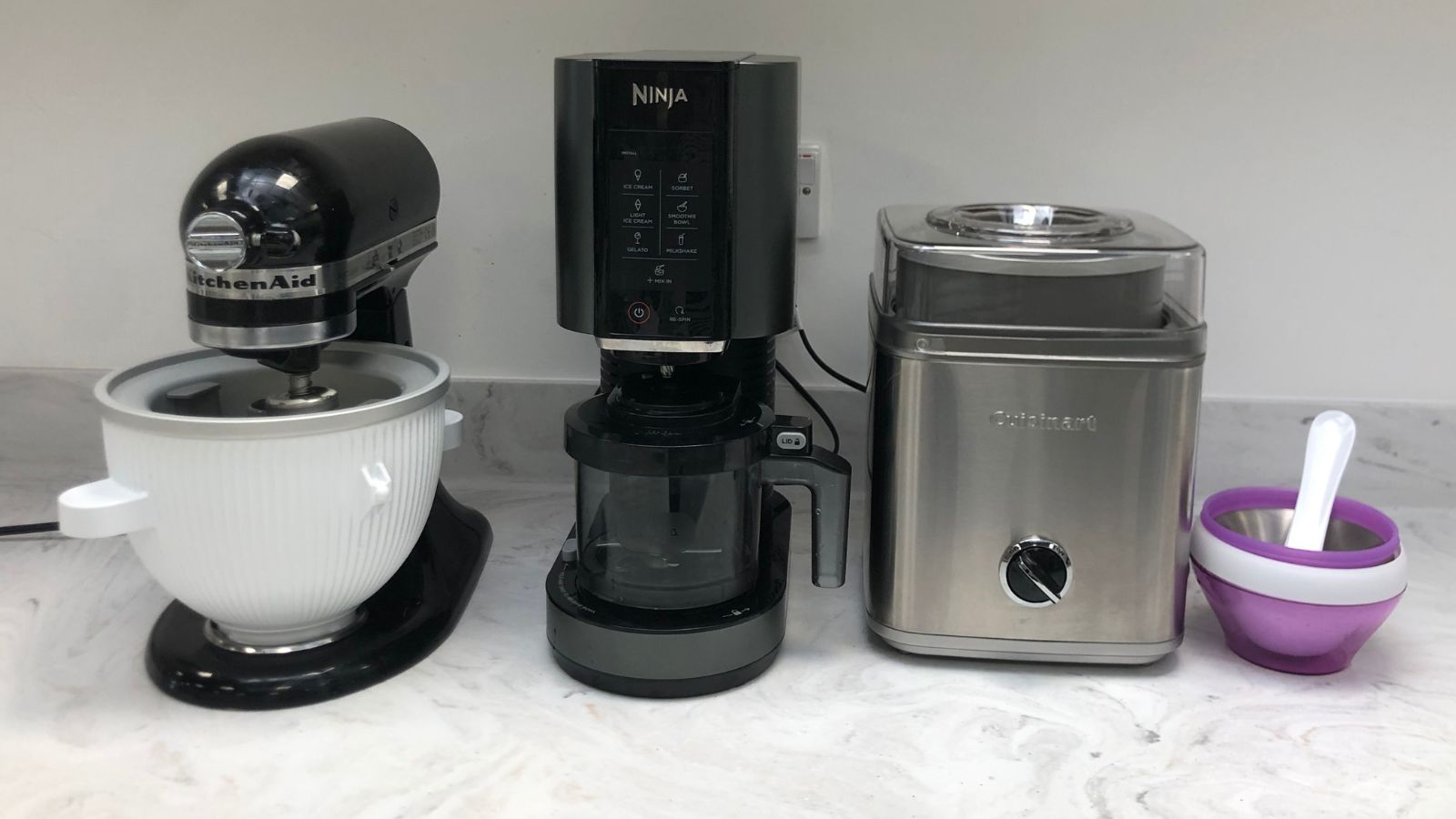
The Cuisinart was the simplest ice cream making process that I tested. It’s a case of placing the bowl and dasher onto the main body, putting the lid on, and the rest is up to the Cuisinart. The most effort I put in was watching the ice cream churn.
It’s relatively quiet when running, especially compared to the Ninja Creami. The process was the cleanest and it made some of the best homemade ice cream that I’ve ever tasted. However, it’s closely rivaled by the KitchenAid attachment. If you already own a KitchenAid stand, I would buy the attachment. It’s cheaper and the ice cream and sorbet that it made was smoother and stayed softer when it was re-frozen.
What the reviews say
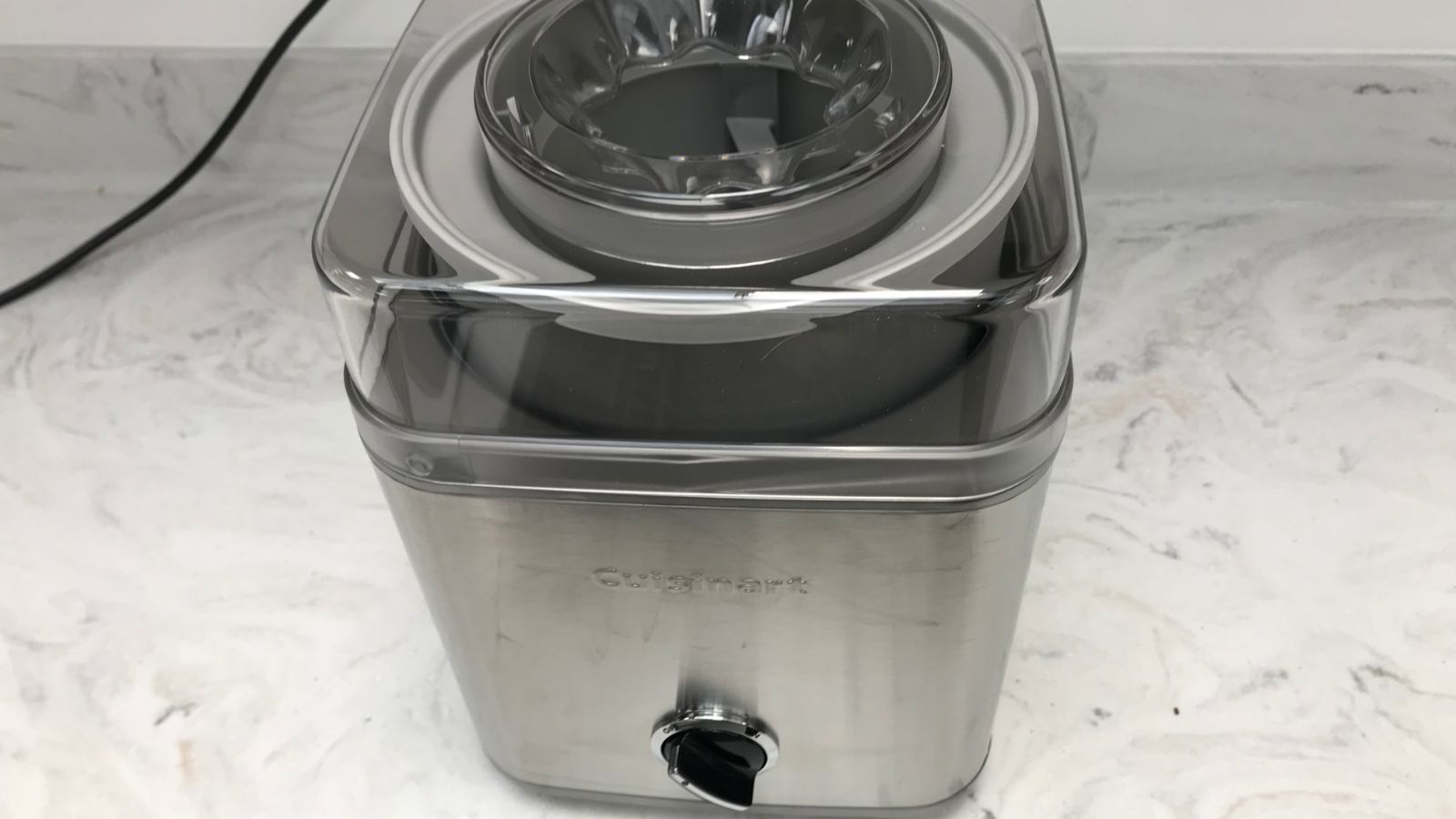
This gets almost five starts from most users. Customers commented on the value, finding it to be the best in its price range. ‘Professional’ was a common term used to describe the ice cream and I couldn't agree more. People commented on how easy it was to store and how good it looks too.
Although I didn’t experience it, some reviewers round that the machine overflowed as you filled it to full capacity. The dasher doesn’t come in direct contact with the edge of the bowl either, so it isn’t constantly scraping ice cream from the frozen sides. Some people found that when this spare ice cream builds up and falls in, it leads to ice cream shards in the mix. I was surprised when I saw this on the reviews, because it’s not something that I experienced at all. I think pouring the ice cream mix in slowly was a big help in that respect. As with the KitchenAid, this bowl is large for your freezer. Many customers issued warnings for space and I even found a recommendation that you store frozen peas inside to save room.
Should you buy it?
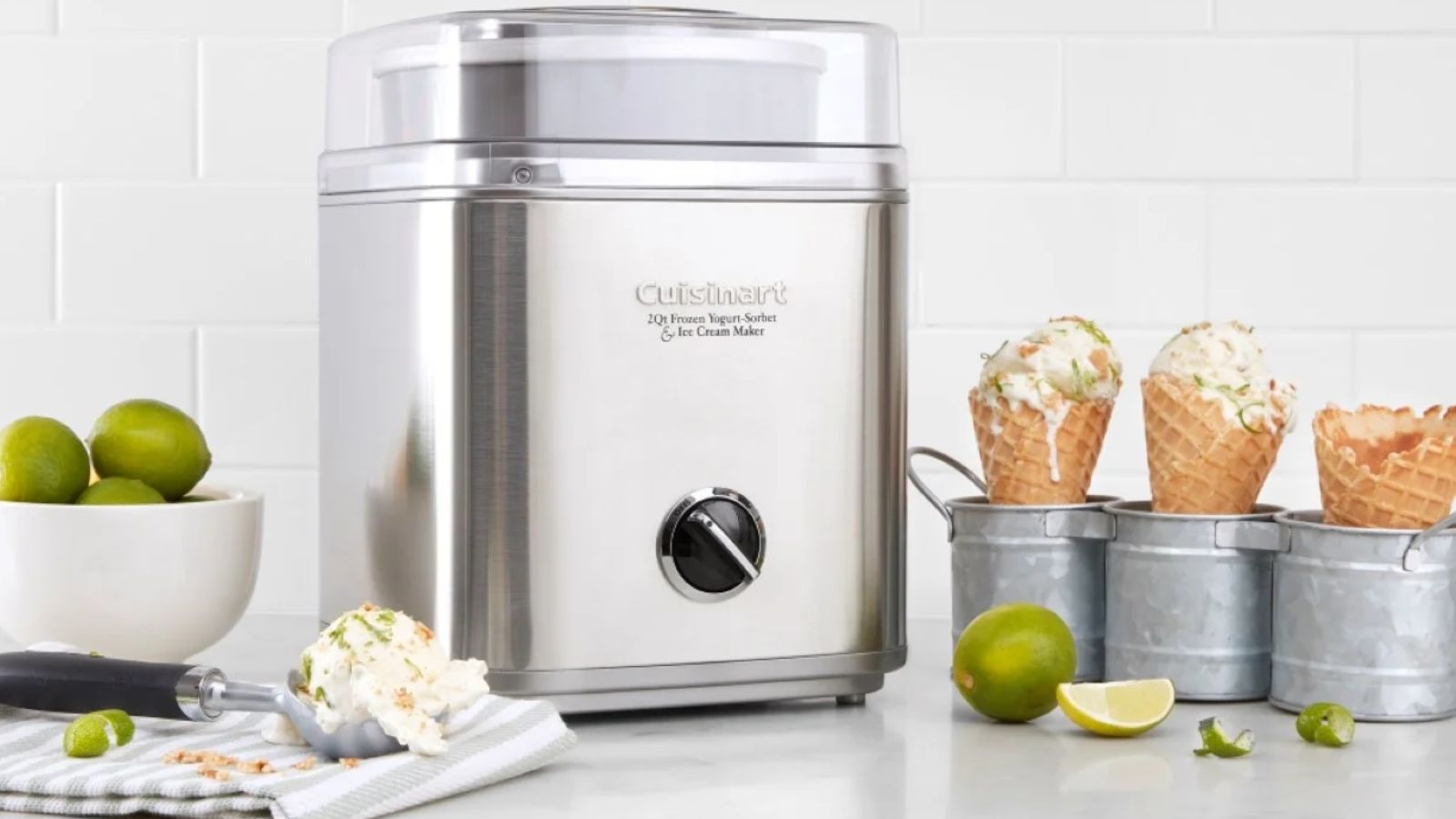
If you’re looking for an entry-level machine with top-tier ice cream results, this is a no brainer. I’m going to make room in my freezer for it. It churned the perfect ice cream and sorbet, so the toughest decision you need to make now is which flavor you want to try first.
How we test
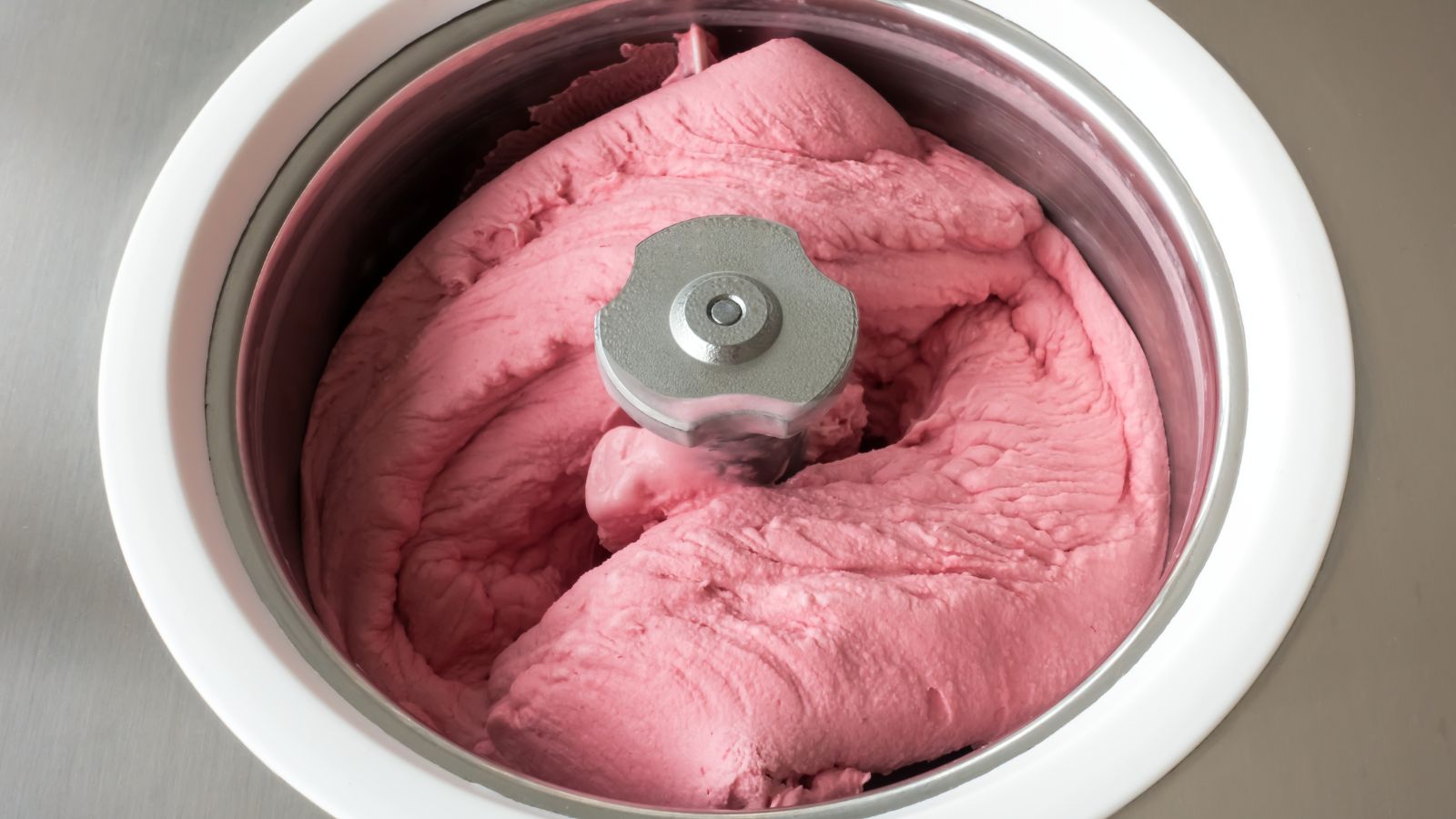
All of our experts are well-established product testers, bringing with them the expertise needed to discern whether these are worthy investments for your home.
For ice cream makers, we researched the best products on the market. We wanted to look for appliances that were good value for money with exceptional results. We took these to our test kitchen and, over the course of a few days, tested these on ice cream, non-dairy ice cream, sorbet, and frozen yogurt. We made notes on the whole process from unboxing to cleaning up to make sure that we didn’t miss a thing. All of these ice cream makers were tested alongside each other, so we could make direct comparisons between them and their results.
Laura has the same model which we tested in her home, using it to make frozen yogurt and ice cream regularly. That's how we found out about the potential problems with vegan yogurt. Cuisinart have allowed her to keep it, free of charge, so she can update the review as she gets more use out of it.
Final thoughts
Cuisinart are market-leaders when it comes to ice cream machines. After using their ice cream maker, I understand why. It’s compact, relatively quiet, and easy to clean. Most importantly, it makes exceptional ice cream.
The Pure Indulgence model sits amongst Cuisinart’s elaborate range of ice cream makers. You can get more frills and flourish, but for under $100, this is good value and a great option for domestic use. I tested this on ice cream, non-dairy products, frozen yogurt, and sorbet, so that I could see how well the Cuisinart performed in everyday ice cream tasks.
It’s reassuring to see that Cuisinart are capable and experienced in the ice cream maker market; they’re a safe bet. Sometimes, big brands don’t innovate or make the best affordable options, but this is the stuff ice cream dreams are made of.







